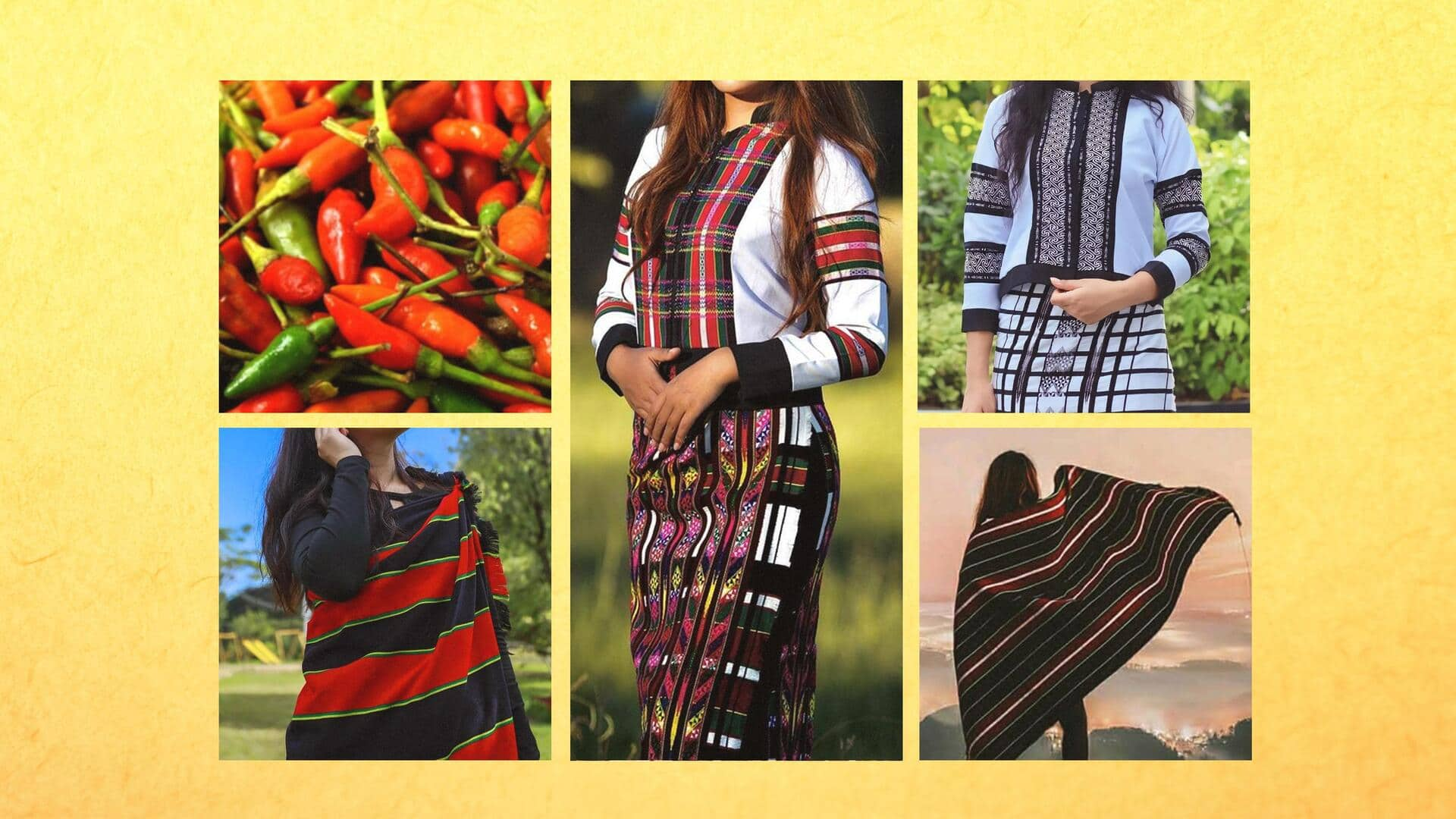
GI-tag products from Mizoram that you should purchase
What's the story
Besides being known for its rolling meadows and untouched forests, the Geographical Indication (GI) tagged products from Mizoram have also joined the bandwagon of things that make the northeastern state famous.
Various authentic products, from handlooms to agriculture and art, in this stunning destination hold cultural significance and offer exceptional quality and uniqueness.
Look for these GI-tagged products while shopping here.
#1
Pawndum
Pawndum is a traditional cloth in Mizoram. It is a black cloth with red stripes.
Locals (usually men) wear it by wrapping it around their waist when performing the traditional Mizo dance of Khuallam.
It assumes different names as per the purpose. For instance, when given as a gift, it is called zawlpuan and when used as a shroud, it is called thihrin puan.
#2
Hmaram
Another textile from Mizoram that has earned the GI tag is hmaram. It is worn by women as they wear it as a wrap-around skirt during festivals, folk dances, and official ceremonies.
This small skirt is elaborately decorated, with stunning patterns and motifs derived from the flora of the state including Kawkpui, Lenbuangthuam, Griffith's Plum Yew, and Disûl motif.
#3
Mizo chili
One of the major spices cultivated in Mizoram is Mizo chili, which is also called "bird's eye chili."
Although it's small, merely half an inch in length, it is one of the hottest chilies in the world, which is why it has a GI tag.
Per reports, the state is soon to export 7.5 metric tons of organic bird's eye chili to the US.
#4
Tawlhlohpuan
Tawlhlohpuan, which is a shawl and translates to "stand firm/not move backward," is a traditional textile worn by warriors for their valor.
Back in the day, this garb was draped on the warriors before they used to head out for battles.
Named after a Mizo soldier, this GI-tagged product is highly regarded for its intricate designs, yarn, and weaving.
#5
Mizo Puanchei
Here's another shawl from Mizoram that carries the prestigious GI tag.
An important possession for the Mizo women today, this piece of fabric is wrapped around the waist to cover the lower body. They are worn during weddings, festivals, and other traditional ceremonies.
Additionally, they are compactly woven textiles that are done on a traditional loin loom.